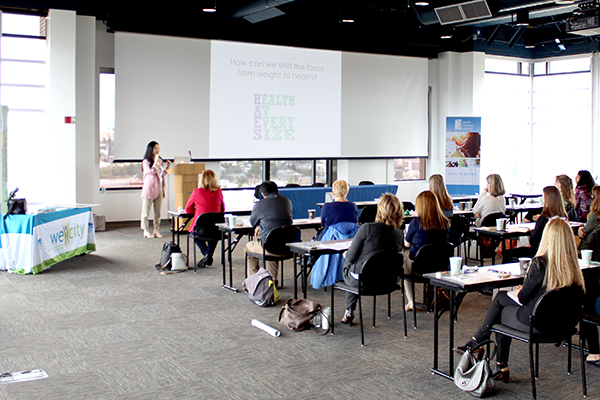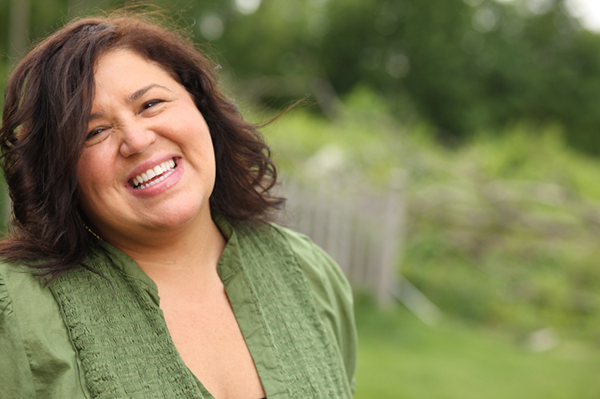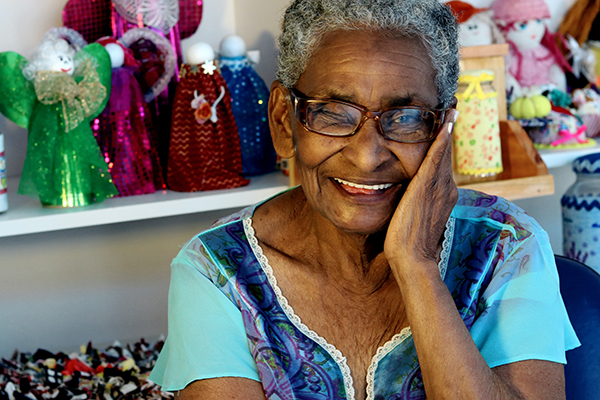Summer Travel Tips

Summer is here and we are now ready for summer travel. Dr. Ari Gilmore at Pacific Medical Centers shares these tips with you for fun and safe travel.
Sun safety:
- Wear sunblock! This is important for long-term skin health. Apply SPF 30 or higher every two hours, or after swimming in salt water.
Water safety:
- Avoid alcohol while boating driving or have a designated boat driver- this is important for the safety of individuals on the boat, as well as others in the water
- Know your own human capacity with ocean currents and waves. It’s easy to get caught in a riptide if you aren’t careful. To get out, follow these steps: Relax (don’t panic), face into the waves and swim out diagonally, once you are 100 feet to the left or right, try to come out of the water again.
Physical safety:
- Wear the right shoes for the activity, i.e. do not hike in flip flops. Keep an eye on the ground when you’re walking- it’s easy to get distracted by the sights; we see a lot of sprained ankles from patients accidentally tripping.
Food safety:
- If you’re going to eat a meal from a food truck, observe it first to see if they have clean meal preparation surfaces, whether or not it’s a busy place can also be a sign of the likelihood of food safety. Avoid eating fresh fruit that has been prepared out of your sight. Cooked vegetables are generally alright to eat but it’s a good idea to avoid the lettuce/cabbage on your tacos. Always be sure you wash your hands with soap and water before eating.
Health/vaccines:
- Avoiding Zika virus: Zika is endemic near the equator, in warm humid climates. Physicians recommend women wait eight weeks after departing a location where Zika might be present before attempting to get pregnant. Likewise, we recommend men wait six months after visiting, as they have the ability to transmit the disease for some time, even after symptoms have subsided.
- Make sure you have the proper vaccines if you’re travelling abroad. Visit www.CDC.gov/travel or see a travel physician regarding malaria, typhoid and yellow fever. The CDC recently mandated that people travelling to Brazil need to receive the yellow fever vaccine. It’s best to see a physician one month prior to travel to ensure you can receive all necessary vaccines.
Tips for long flights:
- Jet lag has less to do with time changes and more to do with the low pressure and low oxygen levels on the aircraft. To increase your oxygen intake, drink higher volumes of water in-flight and make sure you’re properly hydrated the days leading up. Also avoid drinking alcohol on the flight to avoid dehydration.
- Get up from your seat every few hours to stretch your legs and do a few calf squeezes to increase blood flow.
June Wellness Symposium for HR Professionals
Attention HR employees—Save the date for our complimentary wellness symposium!PacMed’s Living Well Alliance team is hosting this event to share ideas on ways to enhance your company’s wellness initiatives.
Wellness Symposium
Thursday, June 14
10:00 a.m.–2:30 p.m.
(Lunch included)
PacMed Beacon Hill campus
1200 12th Ave S Seattle, WA 98144
This lively event will include speakers and roundtable sessions on how to get your employees engaged. Hear from local experts on heart health, behavioral health and a yoga expert for stress-reduction tools. Bring home resources and possible raffle prizes from Lululemon, Steven’s Pass ski lift tickets and more! Join us for this complimentary event. Lunch will be included.
Look for your invitation by email, or contact Christy Goff at PacMed for more details or to RSVP today.
The Living Well Alliance is run by Pacific Medical Centers. Call us today at 1.855.550.8799 for more information or email LivingWellAlliance@pacmed.org.
Walk Your Way to Health!
 Walking is a simple and enjoyable activity that offers many health benefits. Just 30 minutes a day can improve your heart health and lower your risk for high blood pressure, high cholesterol and diabetes.
Walking is a simple and enjoyable activity that offers many health benefits. Just 30 minutes a day can improve your heart health and lower your risk for high blood pressure, high cholesterol and diabetes.
Because walking is a weight-bearing exercise, it helps maintain strong bones. Bone is living tissue, and it gets stronger when you exercise. Specifically, weight-bearing and muscle-strengthening exercise helps to increase bone density such as walking, climbing stairs, jogging, dancing, tennis and lifting weights.
It’s easy to get started with a regular walking routine. If you aren’t a walking enthusiast already, start small. Even if you begin with just 5 to 10 minutes each day, you can gradually work up to 30 minutes of brisk walking in no time! Just gradually increase your time each week as you get in better shape.
Too busy? Break your target walking time into smaller chunks and spread them out during the day. You will still get health benefits. Here are some ideas to fit more steps into your day:
- Take your dog for a stroll.
- Go to the store or post office—on foot!
- Walk over to a colleague to ask a question instead of sending email.
- Get off the bus one stop earlier to walk the rest.
- Park farther away from your office, and use the stairs instead of the elevator.
- Golf—without the cart!
- Hike with a friend at a local park.
- Window shop at the mall or downtown.
Before you know it, walking can be a part of your daily routine!
Nutrition Corner: Eat Right for Strong Bones and Good Vision
 Bone Health: Increasing your intake of dietary sources that are rich in calcium, vitamin D and magnesium can support a personal health goal to maintain strong, resilient bones. As always, work closely with your medical provider to create a care plan that’s right for you.
Bone Health: Increasing your intake of dietary sources that are rich in calcium, vitamin D and magnesium can support a personal health goal to maintain strong, resilient bones. As always, work closely with your medical provider to create a care plan that’s right for you.
Calcium
Calcium is found in dairy products (for example, milk, yogurts and cheese), fortified juices, canned salmon and some plant sources such as tofu. Try making “tuna melts” with salmon instead of tuna, or enjoy plain, low-fat yogurt with fresh fruit for a mid-morning snack. Other excellent sources are figs, cooked bok choy, sardines, almonds, sesame seeds and cooked white beans.
Vitamin D
Vitamin D is in milk and some yogurt and can also be found in eggs, mushrooms and some fortified foods. Starting your day with a hardboiled egg or having a glass of milk instead of your midday soda can help.
Magnesium
Foods rich in magnesium include green leafy vegetables, whole grains, beans and nuts. Fresh fruits and vegetables also provide a modest amount of magnesium.
Eye Health: Studies have shown that some nutrients may help prevent age-related macular degeneration (AMD), a common eye condition and the leading cause of vision loss in people over 50 years old. But are supplements the best path forward to ensuring you eat the right nutrients for good eye health?
While specific vitamins and supplements are promoted as beneficial, experts agree that the best method is to consume a varied diet that’s rich in antioxidants, lutein and zeaxanthin. Sounds easy enough. But what food items contain antioxidants, lutein and zeaxanthin?! Try these recommended sources:
- Most fruits and vegetables, but especially dark green vegetables and yellow and orange vegetables and some yellow and orange ones such as: corn, nectarines, oranges, papaya, squash and sweet potatoes.
- Egg yolks
In addition to diet, certain lifestyle factors can also affect eye health. Be sure to exercise regularly, avoid smoking, and maintain normal blood pressure, blood sugar and cholesterol levels. Check in with your eye care professional on a regular basis as well.
Learn about the dietitian services at PacMed. Or call to make an appointment: 206.505.1300.
What’s Cooking: Tofu Banh Mi
 A traditional Vietnamese banh mi is typically made with pork, but this vegetarian makeover uses crispy tofu, vegetables and zesty sriracha mayonnaise. Tofu, an excellent source of protein, iron and calcium, will keep up your energy and bone health, and it’s a great, affordable option for your meatless Mondays.
A traditional Vietnamese banh mi is typically made with pork, but this vegetarian makeover uses crispy tofu, vegetables and zesty sriracha mayonnaise. Tofu, an excellent source of protein, iron and calcium, will keep up your energy and bone health, and it’s a great, affordable option for your meatless Mondays.
Cataracts 101
What is a cataract?
A cataract is a clouding of the lens in the eye. Just like a camera with a smudged lens, if the eye’s lens is cloudy, the quality of vision will be poor.
What are the symptoms of cataracts?
A person with a cataract may notice that their vision has become blurred or duller. They may have trouble reading or identifying colors, in particular blues and purples. Night vision may be compromised and light-sensitive; for example, headlights may seem too bright or have streaks radiating from them.
Who is at risk?
Although most cataracts occur in older people due simply to aging, cataracts also can be caused by surgery, steroid use, exposure to radiation or an eye injury. Some diseases such as diabetes can contribute to your chance of developing cataracts earlier.
Can I reduce my risk?
You may be able to reduce your risk of a cataract. Here are some tips:
- Avoid UV exposure. Wear a brimmed hat and sunglasses or regular clear glasses with a UV coating.
- Get good nutrition—in particular, green, leafy vegetables, fruit and other foods with antioxidants.
- Receive regular, preventive eye care from an optometrist or ophthalmologist. A typical eye exam is painless. Your eye doctor will track your vision health over time and answer your questions.
How are cataracts treated?
Nonsurgical treatments aim to improve vision as much as possible. These include altering glasses prescription and adding a tint to cut glare. Reading in good light and choosing books with a larger font are other steps. Surgery may be recommended once the symptoms have progressed to a point that it interferes with your daily activities. In cataract surgery, the cloudy lens is replaced with a clear artificial lens called an intraocular lens.
The PacMed Optometry team can assess your eye health, and our Ophthalmology department offers cataract surgery.
Osteoporosis 101
 This “silent disease” causes bone tissue and mass to deteriorate over time. As the bones thin, lose density and become frailer, there is a higher risk for serious fractures. Because osteoporosis takes place gradually over years, people may not know that they have an issue until a sudden strain or fall causes a fracture. This is why screening is so critical.
This “silent disease” causes bone tissue and mass to deteriorate over time. As the bones thin, lose density and become frailer, there is a higher risk for serious fractures. Because osteoporosis takes place gradually over years, people may not know that they have an issue until a sudden strain or fall causes a fracture. This is why screening is so critical.
Older women are particularly susceptible to osteoporosis. Risk factors include:
- Being female
- Going through menopause
- Male or female – being slim and less than 130 pounds
- Smoking cigarettes
- Drinking excess alcohol (more than three glasses daily)
- Having a first-degree relative with osteoporosis
- Age—the older you are, the greater your risk
Screening for osteoporosis involves a bone density scan.
This quick, painless procedure uses an enhanced, low-radiation form of X-ray technology called DXA (pronounced “dexa”). Generally, a DXA screening for women over age 65 is highly recommended. Men over 70 should discuss screening with their primary care doctor. Of course, if you have risk factors, ask your doctor for guidance at any time.
So, what preventive steps can you take?
Two key steps are to get the daily recommended amounts of calcium and vitamin D, and to consistently engage in weight-bearing, impact-based activity. See our related articles on walking and good bone nutrition! Talk with your primary care doctor for guidance.
Find a primary care provider at PacMed! Already diagnosed with osteoporosis? Learn more about our Rheumatology team.









